European integration refers to the process of political, economic, and social unification of the countries of Europe, aimed at creating a more cohesive and cooperative continent. The process began in the aftermath of the Second World War, as European countries sought to prevent further conflict, promote economic recovery, and ensure lasting peace. This integration has been progressively deepened and broadened through a series of treaties, institutions, and policies, ultimately leading to the formation of the European Union (EU). The important features of European integration can be highlighted in terms of political, economic, legal, and social dimensions, as well as the overarching goals that shape the process.
I. Economic Integration: The Creation of a Single Market
- The Single Market:
- One of the key features of European integration is the creation of a Single Market. This market seeks to eliminate barriers to the free movement of goods, services, capital, and people within the EU. The removal of trade barriers, such as customs duties, quotas, and national regulations, allows businesses and individuals to operate freely across member states.
- The four freedoms—the free movement of goods, services, people, and capital—are fundamental to the Single Market. These freedoms not only enhance economic cooperation but also foster competition, increase efficiency, and provide consumers with a broader range of choices at lower prices.
- Economic and Monetary Union (EMU):
- The Economic and Monetary Union (EMU), formalized by the Maastricht Treaty (1992), is another central feature of European integration. The EMU aims to create a single currency, the euro, and establish common economic policies to coordinate the fiscal and monetary actions of member states.
- The introduction of the euro in 1999 (for electronic transactions) and 2002 (for cash transactions) strengthened economic integration by reducing exchange rate risks, increasing price transparency, and encouraging cross-border trade and investment.
- Common Agricultural Policy (CAP):
- The Common Agricultural Policy (CAP) is a hallmark of European economic integration. Established in the 1960s, it aims to ensure stable food production, secure a fair standard of living for farmers, and guarantee reasonable prices for consumers. The CAP represents the EU’s commitment to agricultural integration, with common policies for subsidies, market regulation, and rural development.

II. Political and Institutional Integration
- European Union (EU) Institutions:
- The institutional framework of the EU is central to its integration process. The EU’s major institutions include:
- The European Commission, responsible for proposing and implementing EU laws and policies.
- The European Parliament, which represents the citizens of the EU, participates in the legislative process, and ensures democratic oversight.
- The Council of the European Union, which represents the governments of the member states and is involved in the decision-making process.
- The European Court of Justice (ECJ), which interprets and enforces EU law, ensuring that EU regulations are consistently applied across all member states.
- The European Central Bank (ECB), responsible for monetary policy and overseeing the euro.
- The institutional framework of the EU is central to its integration process. The EU’s major institutions include:
These institutions work together to formulate and implement policies that advance European integration, particularly in economic, social, and legal areas.
- Common Foreign and Security Policy (CFSP):
- As part of its political integration, the EU has sought to create a Common Foreign and Security Policy (CFSP), designed to promote a unified approach to international relations, defense, and diplomacy. The CFSP aims to strengthen the EU’s global influence and ensure a coordinated response to international challenges, such as conflicts, human rights violations, and environmental issues.
- Although not all member states have agreed to every aspect of the CFSP (due to national interests), the policy has allowed for greater cooperation on global issues.

III. Social Integration: Building a European Identity
- European Citizenship:
- The Maastricht Treaty (1992) introduced the concept of European citizenship, which grants citizens of EU member states the right to reside, work, and travel freely within the EU. European citizenship also provides individuals with certain rights, such as voting in European Parliament elections and protection under EU law, enhancing the sense of belonging to a larger European community.
- This has helped foster a shared European identity, making citizens feel more connected to the EU and its values, beyond their national identities.
- Social Cohesion and Solidarity:
- A significant aspect of European integration is the social dimension—ensuring that the benefits of integration are shared equitably across regions and social groups. EU policies promote social cohesion by addressing disparities in income, employment, education, and living standards among member states.
- The EU’s Cohesion Fund and Structural Funds aim to reduce regional disparities, with particular focus on less developed areas, by investing in infrastructure, education, and economic development.
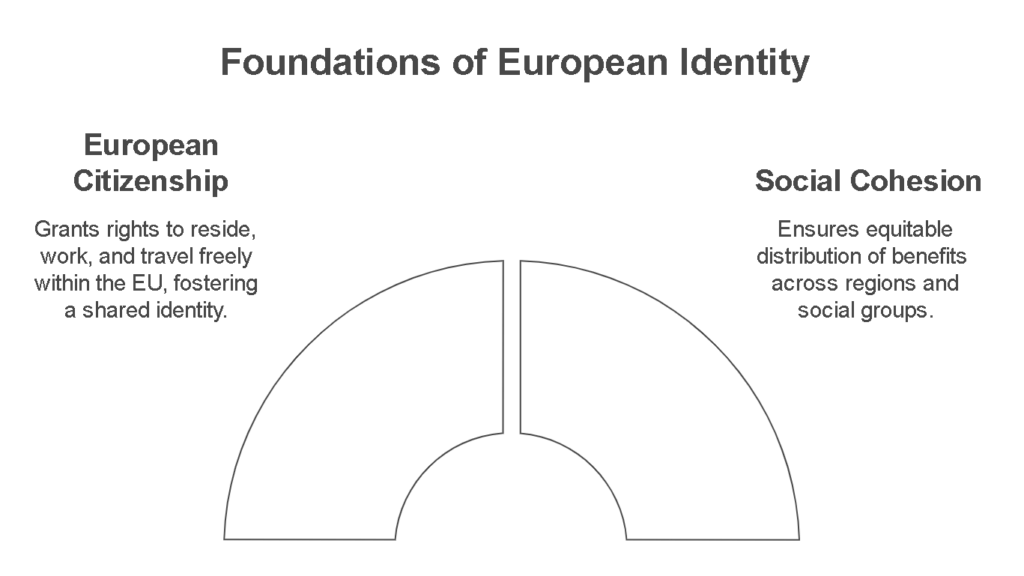
IV. Legal Integration: The Role of EU Law
- Primacy of EU Law:
- A key feature of European integration is the primacy of EU law. This means that EU laws take precedence over national laws in areas where the EU has competence. This principle ensures uniformity in the application of EU policies and regulations across member states, preventing individual countries from undermining the collective agreements made at the EU level.
- The European Court of Justice (ECJ) plays a central role in interpreting and enforcing EU law, ensuring that member states comply with the treaties and regulations that govern the EU.
- Harmonization of Laws:
- European integration also involves the harmonization of laws across member states. This is particularly evident in areas such as consumer protection, environmental regulation, competition policy, and human rights. The aim is to create a level playing field for businesses and citizens across the EU, ensuring fairness, transparency, and equality.
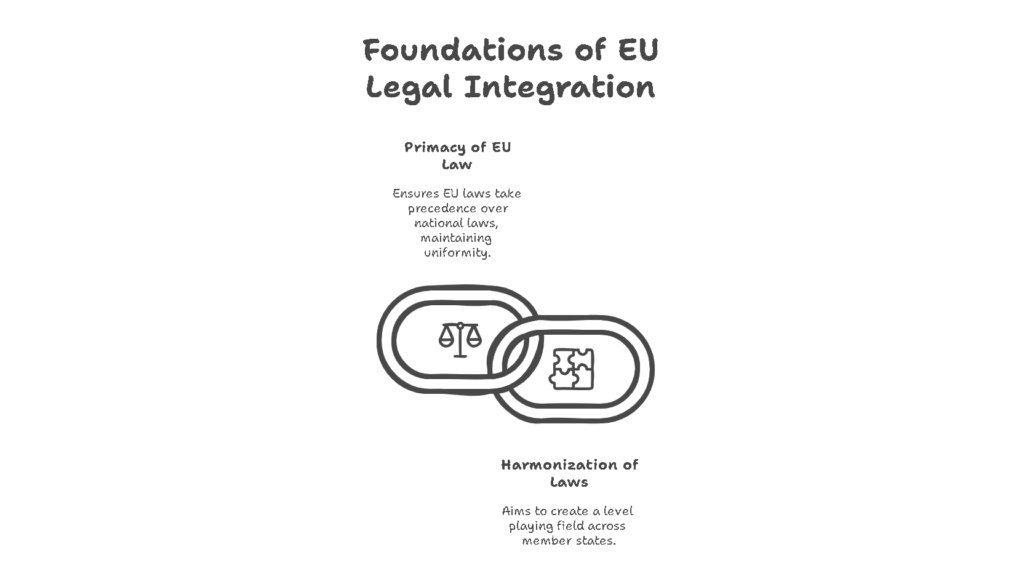
V. Expansion and Enlargement
- Enlargement of the EU:
- A significant feature of European integration has been its enlargement, which has seen the EU expand from six founding members in 1957 to 27 member states today. Each enlargement has brought new countries into the fold, strengthening the EU’s political and economic influence.
- The integration of Central and Eastern European countries after the collapse of the Soviet Union in 1989 was a particularly important phase in European integration, signifying the EU’s commitment to promoting democracy, stability, and prosperity in the region.
- Enlargement Criteria:
- New countries seeking to join the EU must meet certain criteria, known as the Copenhagen Criteria, which include stable institutions guaranteeing democracy, the rule of law, human rights, and respect for and protection of minorities. Additionally, candidates must have a functioning market economy and the ability to adopt and implement EU laws and policies.

VI. Challenges and Future of European Integration
- Challenges:
- Economic disparities: The integration process has not been without challenges, particularly regarding economic disparities between member states. Countries in the Eurozone, for example, face different levels of economic development, which can create tensions over fiscal policies and financial stability.
- Political disagreements: Political disagreements, such as differing views on immigration, climate change, and defense, have posed challenges to the EU’s ability to act as a unified entity.
- Brexit: The decision of the United Kingdom to leave the EU (Brexit) represents a significant challenge to the integration process and raises questions about the future of European cooperation and unity.
- The Future of European Integration:
- Despite challenges, the future of European integration appears to be moving toward deeper cooperation in areas such as climate policy, defense, and digital governance. The EU’s response to crises, such as the COVID-19 pandemic and the migration crisis, will likely shape its future development.
- Additionally, the expansion of the EU to include new member states from the Western Balkans, Ukraine, and other countries remains an ongoing objective for the Union.
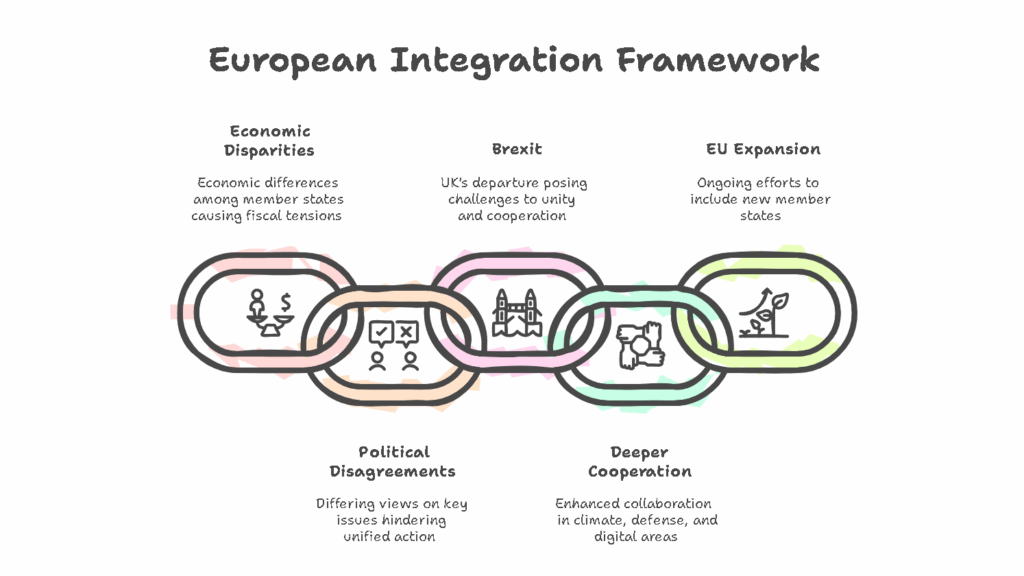
Conclusion
European integration is a complex and multifaceted process, characterized by economic, political, legal, and social dimensions. The Single Market, Economic and Monetary Union, EU institutions, and European citizenship are central to this process, while the ongoing enlargement and efforts to enhance social cohesion and political unity remain key to its future. Despite facing challenges, the EU continues to serve as a model for regional cooperation, striving to balance the interests of its diverse member states while pursuing a common vision of peace, stability, and prosperity.
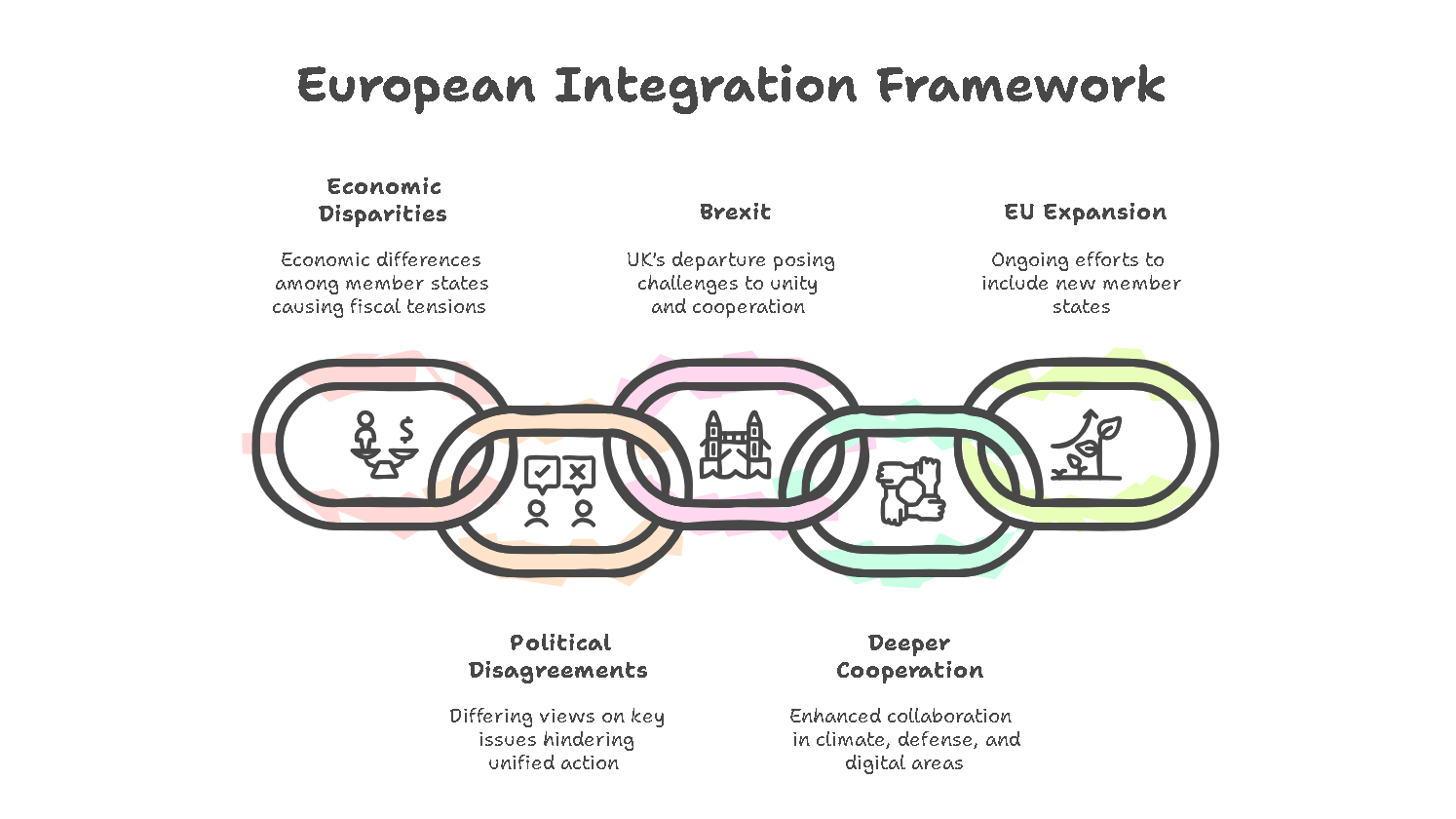


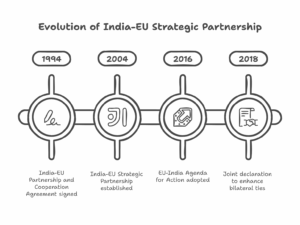
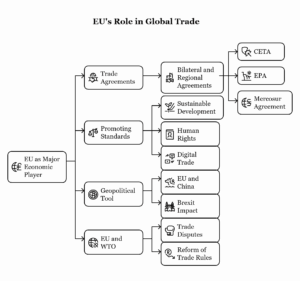

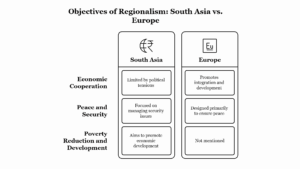

Leave a Reply